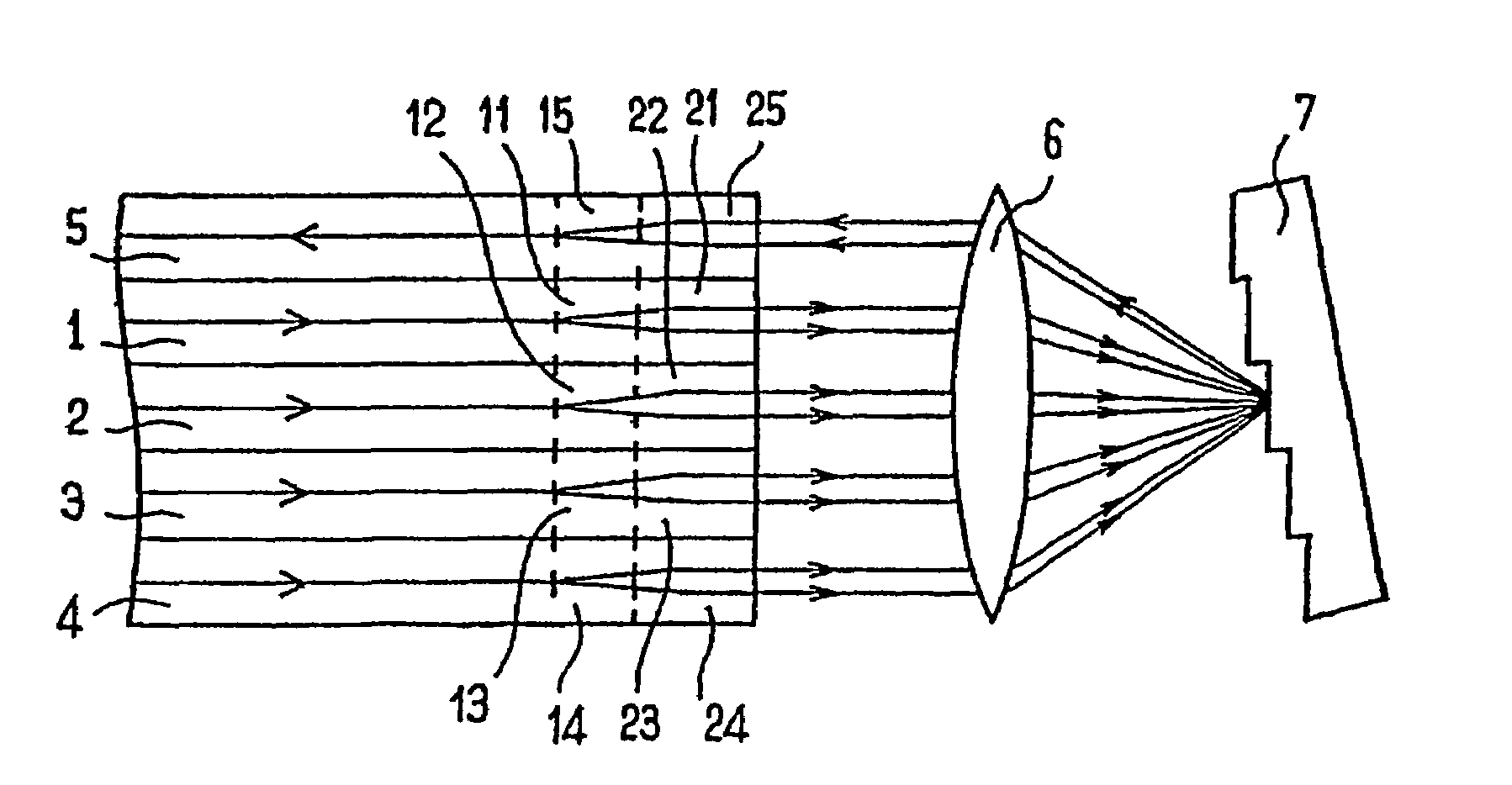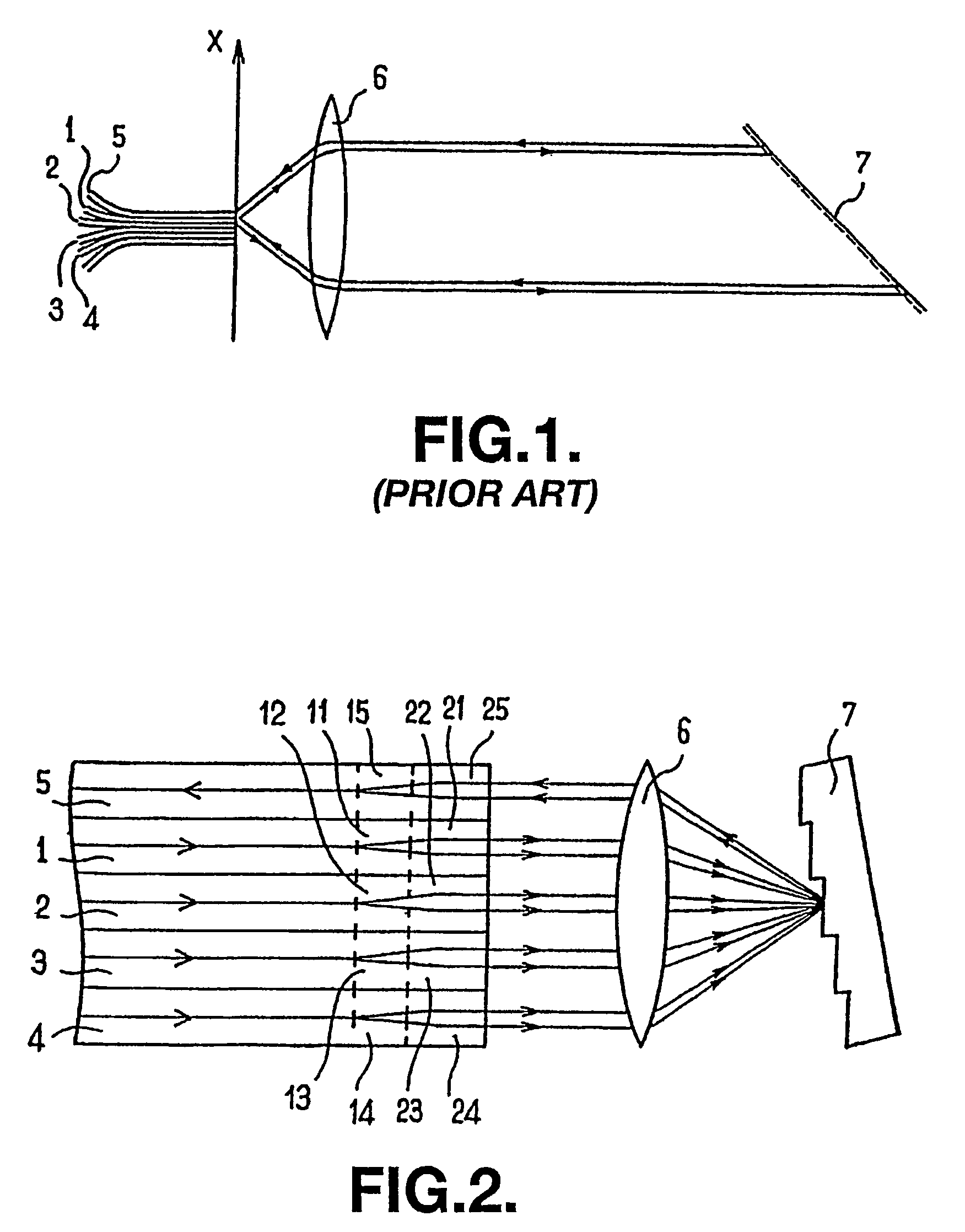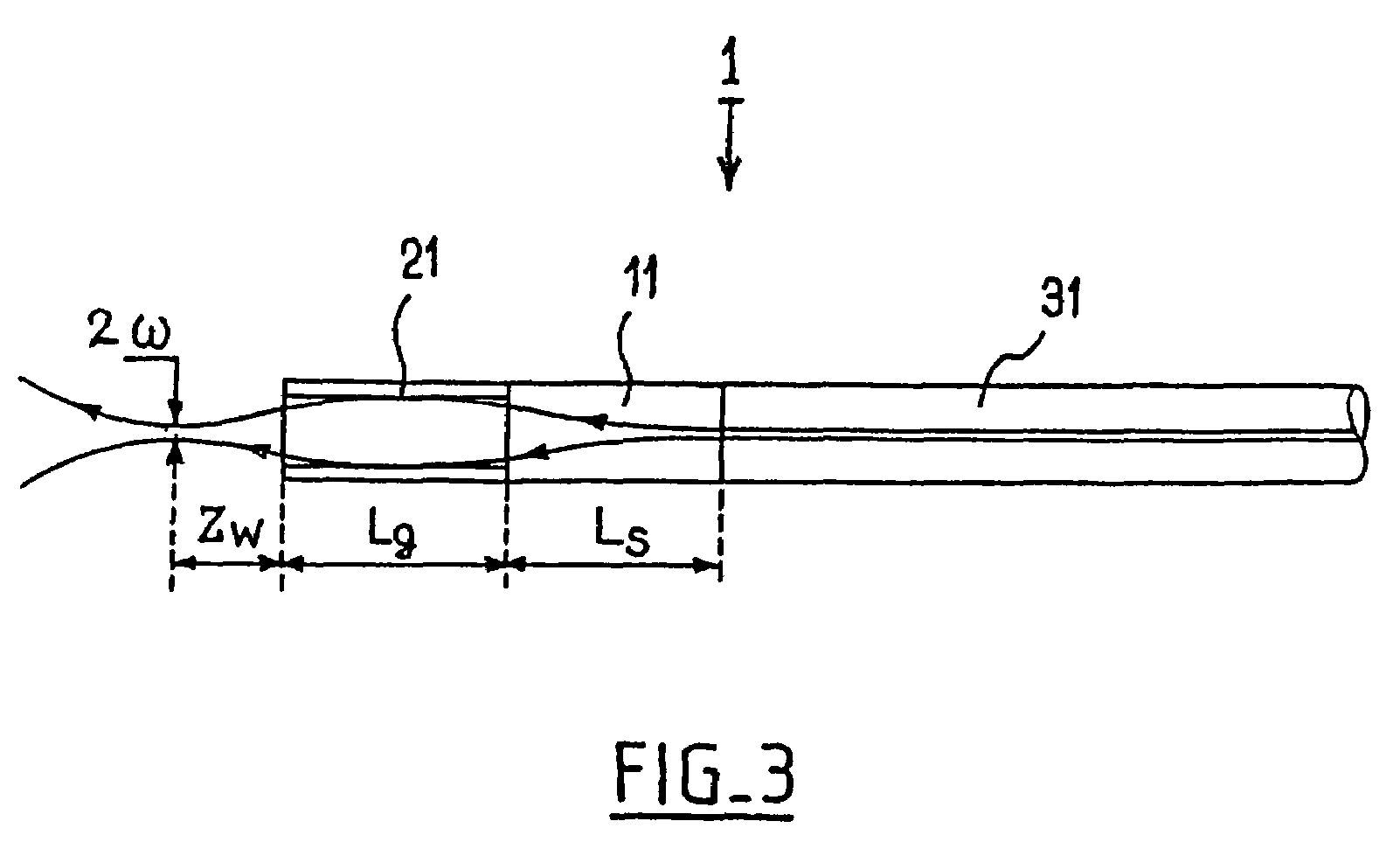Optical component with spectral separation
a technology of optical components and spectral separation, applied in the field of optical components, can solve the problems of relative cost, achieve the effects of reducing x, increasing the ratio fwhm/, and reducing the physical space between the paths
- Summary
- Abstract
- Description
- Claims
- Application Information
AI Technical Summary
Benefits of technology
Problems solved by technology
Method used
Image
Examples
Embodiment Construction
[0018]Of course this invention is not limited to the particular number of fibers illustrated in the appended figures, particularly to a 4 to 1 multiplexer, but extends to any component comprising n fibers.
[0019]The component represented in FIG. 2 operates like a multiplexer (this type of component could, of course, also be used as a demultiplexer). This component comprises coplanar optical fibers 1 to 5 that are parallel to one another and juxtaposed. Fibers 1 to 4 are input fibers, each dedicated to a given frequency band. Fiber 5 is an output fiber ensuring the transmission of the multiplexed optical beam obtained by superimposing the beams coming from the input fibers 1 to 4. The component also comprises a focusing element 6 of the lens type placed opposite the ends of fibers 1 to 5 and a diffractive element 7, for example a diffraction grating, that receives the signals coming from the input fibers 1 to 4 via the focusing element 6.
[0020]In known manner, the diffraction element ...
PUM
 Login to View More
Login to View More Abstract
Description
Claims
Application Information
 Login to View More
Login to View More - R&D
- Intellectual Property
- Life Sciences
- Materials
- Tech Scout
- Unparalleled Data Quality
- Higher Quality Content
- 60% Fewer Hallucinations
Browse by: Latest US Patents, China's latest patents, Technical Efficacy Thesaurus, Application Domain, Technology Topic, Popular Technical Reports.
© 2025 PatSnap. All rights reserved.Legal|Privacy policy|Modern Slavery Act Transparency Statement|Sitemap|About US| Contact US: help@patsnap.com



